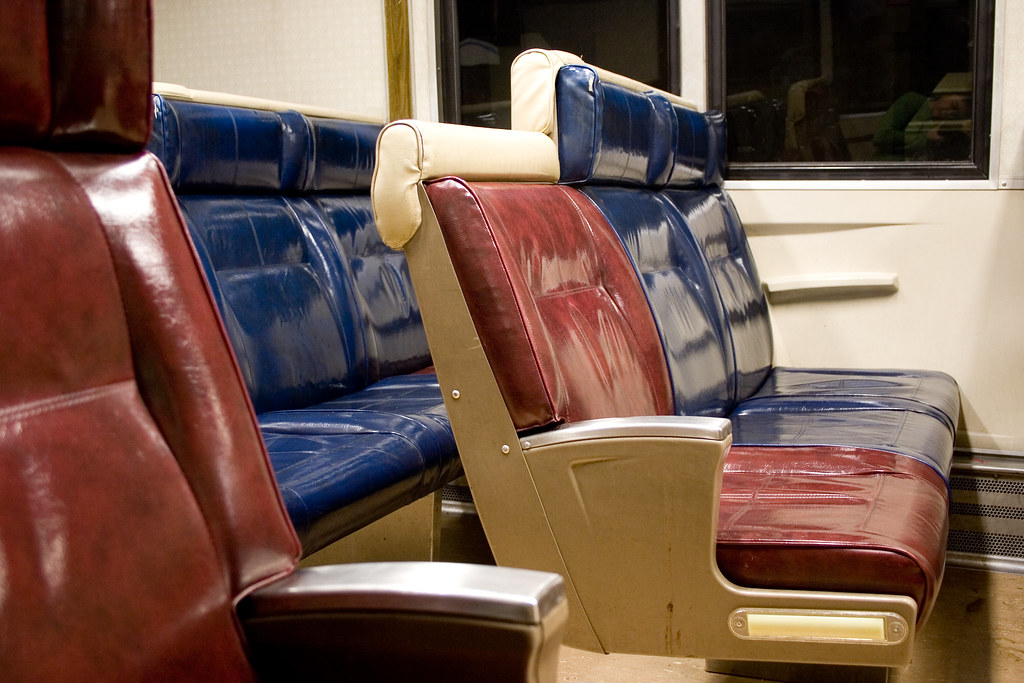
At Spring St., the PA/CIS countdown clock reminds straphangers that the system is still in the testing phases. (Photo via New York City Transit)
New York City Transit’s efforts at bringing late-20th century technology to its decidedly early 20th century subway system hit a milestone this week as the agency turned on the PA/CIS countdown clocks at the 40th station. The rollout will eventually include the 152 numbered line stations that make up the A Division, and Transit is now more than halfway to its goal of 75 stations for 2010.
“These countdown clocks are another way we are fundamentally changing the customers’ experience using our system by connecting them with 21st century technological advances,” MTA Chairman and CEO Jay H. Walder said in a statement. “Despite tough economic times, we continue to move forward in modernizing our communications network, finding creative and affordable ways to better service the riding public.”
In the release touting this progress, the MTA ran through the typical lines. The screens are located before the turnstiles and on platforms. They take the guesswork and the age-old technique of peering down the track into a dark tunnel to discern the lights of an approaching train. The screens provide a way for the MTA to communicate with its riders in case of emergency or unscheduled delays. Yadda, yadda, yadda.
The real benefits are psychological, and Transit president Thomas Prendergast touched upon this aspect of the project. “We are moving ahead steadily with this vital customer information initiative,” he said. “With the PA/CIS screens activated on a regular basis across the system, more and more subway riders will be able to just look up and see when their train will arrive.”
It’s tough to underestimate how comforting it is to be able to just look up and know when the next train is coming. I know from experience. Since my semester ended and the summer job started, I’ve gone from taking B Division trains from Brooklyn into Manhattan to riding the 2/3 from Grand Army Plaza to the 4/5/6 stop at City Hall/Brooklyn Bridge. The countdown clocks at Grand Army Plaza were activated in early June, and they have been a calming revelation.
When I get to the station now, I can check the sign before swiping in, and when I alight on the platform, the sign is right there counting down the time. I don’t have to peer, and I find myself growing much less impatient with the wait when the minutes are melting away. It’s still a novelty to see the train arrive on time, but it’s much less stressful to know that the train that is supposedly three minutes away will actually arrive in three minutes. No more waiting for the piercing shrill of the sign informing us that a Brooklyn- or Manhattan-bound train may be approaching; no more hoping for the lights in the tunnel to grow brighter. I don’t have this luxury at City Hall, and I find myself tapping my toe more often than not before the packed rush hour trains arrive.
Of course, the system isn’t quite perfect, and that’s why I say I’m guardedly praising it. The signs at both Nevins St. and Grand Army Plaza are bugging. The Nevins St. signs present a challenge for the MTA because it is one of the few express stops where the PA/CIS system has been activated. With the 4 and the 5 arriving across the platform from 2 and 3 trains, the signs often contain bad information, and when a train is nearly about to enter the station, the numbers start jumping around. Furthermore, during special announcements from the NYPD, the countdown for the next train freezes. The MTA assures me they will examine this issue, but it’s an alarming one nonetheless from an organization that has struggled with technological adaptation.
For now, the MTA remains on track to bring this technology — one enjoyed internationally for decades — to the IRT lines by mid-2011. The B Division stations remain in limbo as low-budget tests continue while high-tech solutions remains impossibly expensive. Until that day arrives, I’ll stick with my stress-free waits along the A Division. For all the bugs, the signs, promising an end to a long wait on a hot, sticky platform, truly do make traveling slightly more pleasurable.




 While Cablevision and
While Cablevision and 



